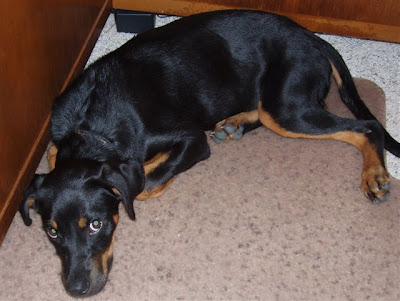
Good morning, everyone. I feel compelled to post the announcement that most folks have already received from the listserv about the poop pick-up "party" that will take place on Saturday morning at Dog Park. It was arranged by Laure McLaughlin, the informal liaison between us Parkers and the state agencies on whose land we walk and poop. (Aside: Yesterday I was at Park with a friend who brought her little girl, so cute in her cowgirl boots. The little girl had to pee, so her mother let her go right under our pecan trees. Is little girl pee worse than dog pee in the taxonomy of pee? I felt a little shiver of annoyance. Maybe I was just jealous that I have to hold it when the dogs can let loose anywhere.)
Anyway, here are the particulars of the Poop Pick-up, for those who don't already know:
Come when you can (starting @ 10am) with gloves, trash bags, dogs ON LEASH and whatever else to help clean up the dogpark. It's also a great time for newbies to learn the unofficial rules we live by, such as:
* avoiding agency buildings and personnel at all costs;
* picking up after your dog every visit and actually placing it in the trash receptacles;
* not allowing your dog(s) to chase or harass anyone, especially those you don't know personally, such as agency personnel, bikers, joggers and walkers without dogs;
* keeping our dogs and our dog park friendly and respectful of others.
The point about keeping dogs leashed, I'm sure, is about making a token effort to obey the signs. I won't even bring my dogs. How can I pick up other dogs' poop when I've got two unhappy dogs on leashes attached to me?
Laure also let everyone know that both the state agency and the Texas State Cemetery Board are aware of the plans for pick-up. (Insert smarty-pants eye roll here.) I know that the point of alerting the agencies is to let people—whose good graces we count on—know that we are doing our best to be good trespassers—er, neighbors. Still, a girl and her dogs roil a bit about having to let authorities know that we are out there in the first place. (Insert shrug here.) I am not a good team-player; that's why I hang with dogs. I only grudgingly admit that I am connected to all things in the universe. Om, baby. See you at the Dog Park. Don't forget your gloves. --z





+(2).jpg)







